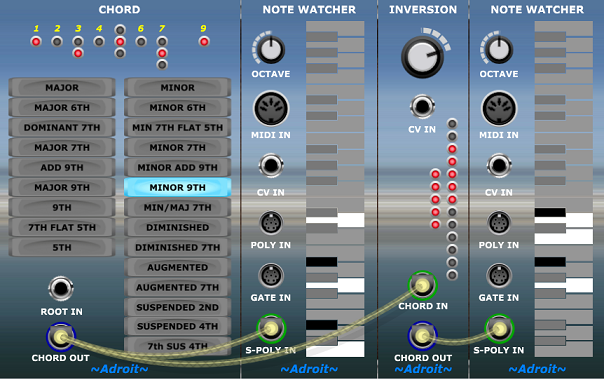
A module that performs inversion on chord signals fed to the CHORD IN S-Poly socket.
Inversion is a very common practice in musical composition that rearranges the octaves of notes in a chord. This revoicing enables the chord to be moved up and down in pitch range without altering its basic harmonic function.
When there is no inversion the notes are in their standard order – this is called root position. So in a basic three note chord (a triad) the root note is the lowest in pitch, the third is higher and the fifth is the highest in pitch.
First inversion raises the bottom (root) note an octave, second inversion the bottom two notes an octave, and so on.
It’s easy to think about inversion as only a means of rearranging chords to go up in pitch range but adjusting downwards is just as important.
So this module combines inversion with octave shifting making it really easy to adjust chords so that chord progressions flow nicely. Nine different positions (including root position) are available.
Use the knob to change the inversion. The range is -4 to +4. 0 (12 o’clock) is root position.

The exact behaviour depends on how many notes are in the chord. Chords with up to five notes are supported.

Inversions are generally static but if a control voltage is applied to the CV IN socket it is added to the knob setting, so for instance a 2V signal will put the chord into second inversion if the knob is set at zero. Interesting effects can be achieved using a modulating signal such as an LFO to change the inversion over time.
The LEDs help in understanding what is going on with chords of various sizes.
The Chord Listening Patch is highly recommended for understanding how this module works.
Availability
The Inversion module is part of LSSP XL.